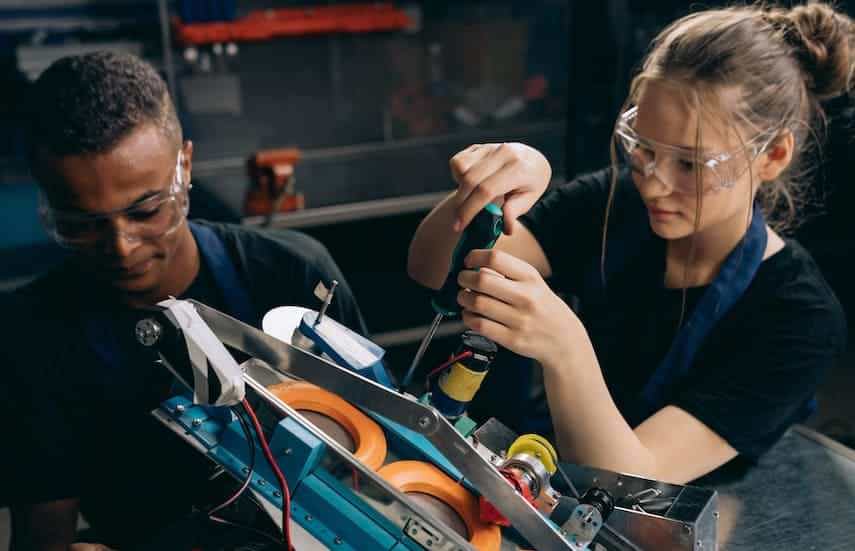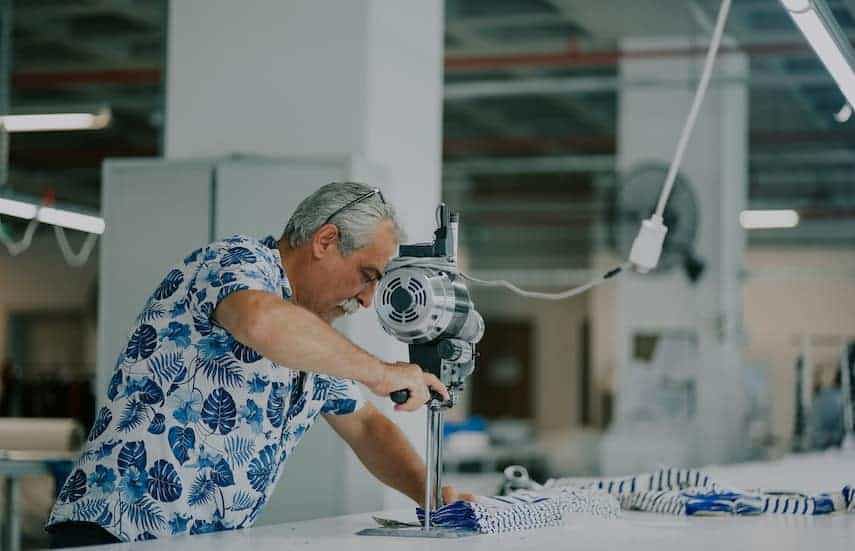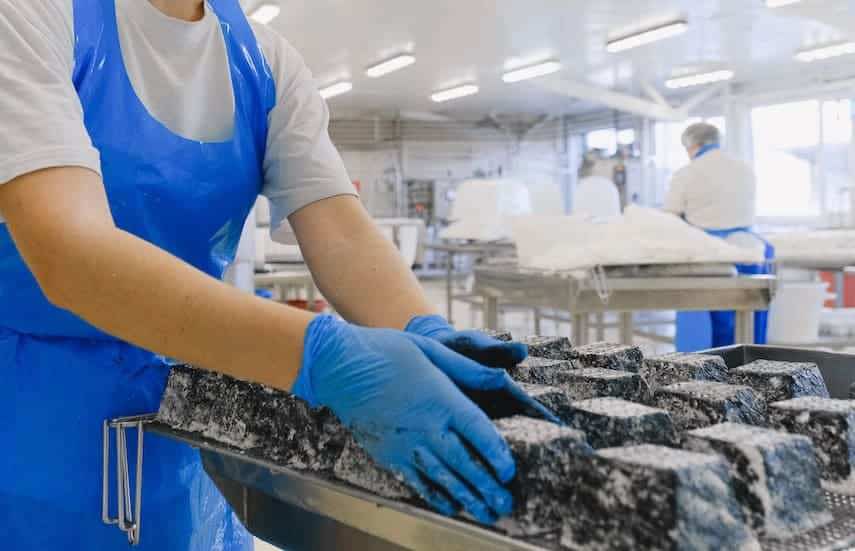
The internal processes of a manufacturer are critical to the success of the overall business.
By improving the speed of these processes and eliminating inefficient or costly practices, we can maximise productivity and profit.
This article breaks down 11 of the most effective process improvement techniques in manufacturing that you can implement in your workplace today.
What is process improvement in manufacturing?
In manufacturing, process improvement refers to the optimisation of various workplace tasks with the aim to increase efficiency and productivity while reducing costs and waste. Process improvement comes down to defining and adjusting the way your business does things, to achieve better outcomes.
From improving product quality to refining delivery times and upgrading production outputs, there are many opportunities to improve processes in manufacturing. The techniques covered in this article seek to maximise the ROI of your organisation by analysing your systems and identifying imperfect processes ripe for improvement.
 Process improvement techniques like lean manufacturing and Kanban help businesses achieve optimal business health.
Process improvement techniques like lean manufacturing and Kanban help businesses achieve optimal business health.
Why manufacturing process improvement is so important
Process improvement is a crucial element for all manufacturers as its main objective is to advance the performance, efficiency, and profitability of your business.
As organisations grow and develop, changes are required to ensure that production processes are still relevant and working as best as they can. Without process improvement, you could be losing sales, spending more on production than you need to, and missing out on major opportunities to boost the success of your business.
- Learn more: Digital Manufacturing & the Smart Factory
11 effective process improvement techniques in manufacturing
There are several process improvement techniques which can be successfully implemented in all kinds of businesses. Some organisations even choose to combine different techniques in order to meet the unique needs of their operations.
Here are the 11 process improvement techniques you should know about.
1. Six Sigma
Six Sigma’s methodology was developed in the 1980s by a scientist at Motorola. It involves using statistical data as a type of quality control to eliminate defects, reduce the number of variations in an end product, and improve processes in a business.
The Six Sigma concept says that all processes in an organisation can be measured and optimised for improvement using a statistical benchmark.
Six Sigma helps manufacturing businesses improve the overall consistency of products, ultimately resulting in more satisfied customers and a better brand reputation.
There are five stages of Six Sigma for existing processes:
- Defining
- Measuring
- Analysing
- Improving
- Controlling
These can be remembered by the mnemonic: DMAIC.
There are also five stages of Six Sigma for new processes:
- Defining
- Measuring
- Analysing
- Designing
- Verifying
These can be remembered by the mnemonic: DMADV.
In addition to the Six Sigma concept is Lean Six Sigma.
Lean Six Sigma is a slightly different process improvement technique that aims to minimise the waste of physical resources, time, effort, and talent while supporting the standardisation of work. It uses a combination of Six Sigma and Lean Manufacturing tactics and is more of a team-focused, managerial approach.
In Lean Six Sigma methodology, any resource that doesn’t provide value for the end user/customer is seen as waste and should be removed from the process.
 The Six Sigma process improvement technique helps manufacturers achieve better consistency in production.
The Six Sigma process improvement technique helps manufacturers achieve better consistency in production.
2. Lean Manufacturing
Lean Manufacturing, also known as Lean Production, is a popular process improvement technique that aims to remove waste, increase profits, and realise more efficient outputs.
The seven areas of ‘waste’ that lean manufacturing looks to identify are:
- Transport – the transportation of products and materials
- Motion – movement between tasks within the factory or warehouse
- Waiting – the time spent idle between tasks
- Over-processing – production tasks that don’t provide further value for the end user
- Overproduction – items that are produced despite a lack of customer demand
- Defects – time spent remedying errors in the production process
- Inventory – the products and quantities that make up your inventory
Lean manufacturing originated in the 1900s with Henry Ford’s car manufacturing. Toyota took it to the next level in the 1930s and ‘40s when they replaced target-driven ‘push’ production with the less wasteful ‘pull’ production technique.
The key benefits of implementing lean manufacturing are time savings, cost savings, and improved quality of products and services.
3. Kaizen
Kaizen, also called ‘Continuous Improvement’, is a manufacturing technique that originates from the Japanese philosophy of the same name. It’s based on the idea that we should be continuously improving our lives so that they are more satisfying and fulfilling.
In a business sense, Kaizen uses lean techniques to enhance production processes, resulting in the overall optimisation of productivity and product quality.
There are three types of waste that Kaizen aims to remove from processes:
- Muda (wastefulness). This occurs when a process consumes resources but doesn’t add any extra value.
- Mura (unevenness). This refers to waste and unmoving products created by overproduction.
- Muri (overburden). This covers any strain on an organisation's resources, including overused machinery and overworked employees.
There are many ways in which an organisation may identify waste within their structure and systems. Opportunities include underutilised workers, excess inventories, and ineffective processes.
The Kaizen process improvement technique helps businesses to ensure they are delivering value to their customers in the most sustainable and streamlined way.
4. Total Quality Management (TQM)
Total Quality Management (TQM) is a customer-led process improvement technique that, like Kaizen, carries a focus on continuous improvement.
TQM relies heavily on data and performance metrics to make decisions about change. It focuses on customer outcomes as the end goal, and involves asking and answering the question: How will this modification affect the end user’s experience of our product?
What sets TQM apart from other process improvement methods is that it takes a company-wide approach. In the case of a manufacturer, TQM looks at all aspects of the organisation (not just production) to create a more business-centric approach.
TQM also distinguishes itself from Six Sigma and Lean Manufacturing because its primary purpose is to optimise processes and reduce inefficiencies, rather than minimising waste and preventing defects.
 Improving manufacturing processes using the Kaizen technique helps to guarantee your customers receive the exact products they want.
Improving manufacturing processes using the Kaizen technique helps to guarantee your customers receive the exact products they want.
5. Business Process Management (BPM)
Much like TQM, Business Process Management finds its place in the practice of analysing and then improving business processes.
There are three types of business process management:
- Human-centric BPM: processes relating to things that only people can do.
- Document-centric BPM: documents that are created, used, and revised within the business.
- Integration-centric BPM: the adoption and integration between digital tools and applications.
Every organisation has employees who complete sequences of tasks or activities, working towards a specific goal of the business. Over time, these processes may not be as efficient as they used to be, rely on outdated technology, or contain unnecessary steps.
Yet in many cases, we don’t update this process or that because we’ve ‘always’ done things this way. And in manufacturing, a conservative mindset can be highly detrimental.
BPM aims to understand which processes are outdated or ineffective in achieving the targeted result. It uses process improvement techniques and analysis to optimise workflows, practices, and systems for maximum value and output.
6. 5S methodology
The 5S process improvement technique is a branch of lean manufacturing that concentrates on the 5S principles pioneered by Toyota. It aims to minimise waste, improve flow, and remove processes that don’t add value.
The 5 S’s of 5S methodology and their goals are:
- Sort (seiri) – set apart required tools and equipment from anything that is not needed.
- Set in order (seiton) – organise and identify tools and equipment for easy access and use.
- Shine (seiso) – keep workspaces clean and tidy.
- Standardise (seiketsu) – make, sort, set in order, and shine a part of the daily work schedule.
- Sustain (shitsuke) – create a habit of repeatedly applying the 5S methodology for continued improvement.
5s methodology can reduce frustration over operational inefficiencies, help manage increasing costs (resulting in excess spending), and minimise customer support queries.
7. Overall Equipment Effectiveness (OEE)
Overall Equipment Effectiveness is a metric that calculates the percentage of planned production time that is productive. OEE is an especially popular process improvement technique in the manufacturing industry.
It provides a metric for best practice, helping to identify whether an organisation is functioning at an optimal level. An OEE score of 100% would imply you have a flawless production process that operates as fast as it possibly can with zero downtime for workers or machinery.
There are two ways to measure OEE:
- Basic: (Good Count × Ideal Cycle Time) / Planned Production Time
- Advanced: Availability × Performance × Quality
OEE has the potential to provide benchmarks for your organisation based on industry standards. It can also aid in understanding where efficiencies can be made on the production line.
Once changes are made, you can then recalculate your OEE to track your progress.
8. Agile Methodology
Agile Methodology is a fluid strategy commonly used in project management.
It aims to make allowances for feedback from all stakeholders, identify problems and successes to create change where needed, and ultimately, improve communication and collaboration in a business.
The four main values of Agile Methodology are:
- Individuals and interactions over processes and tools
- Working software over comprehensive documentation
- Customer collaboration over contract negotiation
- Responding to change (rather than following a concrete plan)
Agile methodology can function as a process improvement technique, wherein organisations move through project management by breaking it up into several phases. Involved employees will then cycle through stages of planning, executing, and evaluating.
 Agile methodology is a fluid manufacturing process improvement technique that focuses on responding to change as it happens.
Agile methodology is a fluid manufacturing process improvement technique that focuses on responding to change as it happens.
9. Kanban
Kanban is a visual workflow technique built for eliminating bottlenecks, improving efficiencies, and tracking the progress of your process improvements.
Based on a ‘pull’ system, Kanban is about starting work from a point where there is a demand and is not about replacing systems, but rather streamlining them wherever possible.
The six Kanban practices are:
- Visualise (the work, the workflow, and the business risks)
- Limit work-in-progress
- Manage flow
- Make policies explicit
- Implement feedback loops
- Improve collaboratively and evolve experimentally
Many major companies use Kanban as a process improvement technique, including Nike, Jaguar, Pixar, Spotify, and Zara.
10. Just-in-Time (JIT)
Just-in-Time manufacturing is an offshoot of lean manufacturing and production, often (inaccurately) labelled one and the same.
The core principle of JIT is that items are produced to meet demand and never in surplus or in advance of a need. This way of working helps to increase efficiency, reduce excess expenditure, and improve the rate of delivery.
When implementing a Just in Time strategy, businesses must minimise the key wastes found in manufacturing such as overproduction, idle time, and clunky workflows.
JIT can be used effectively on its own, or in conjunction with the wider practices of lean manufacturing, which will add focus on the customer to the process.
11. 5 Whys Analysis
The 5 Whys Analysis is a simple yet effective process improvement technique used to uncover the source of a problem in an organisation.
At its most basic, it involves bringing those that experienced an issue or failure together and asking them: Why did this go wrong?
Sometimes this question must be asked again and again until the actionable answer is uncovered (that’s where the name of this technique originates).
The 5 Whys technique must be used with care. It’s not about placing blame on an individual but rather identifying issues within a process.
The persons involved are then included in identifying a solution, or changes to the process. This collaborative process helps to ensure the same issues don’t occur happen again.
See faster manufacturing improvement
Process improvement in manufacturing can be achieved faster with automated systems and real-time data insights. Check out this overview of how cloud manufacturing software can help you improve and optimise your production process.
Want to know more?
- Watch an inventory optimisation demo. Learn how Unleashed helps you track key inventory data in real-time, forecast sales demand, and set optimal stock levels to save you precious time and money.
- Sign up for a free 14-day trial. Discover first-hand how Unleashed helps you improve productivity, master the purchasing process, and boost efficiency with a risk-free two-week trial.
- Chat with an expert to assess your needs. Are you ready to take your business to the next step? Book a free chat with one of our in-house experts for an honest discussion about your stock optimisation requirements.
More posts like this:

